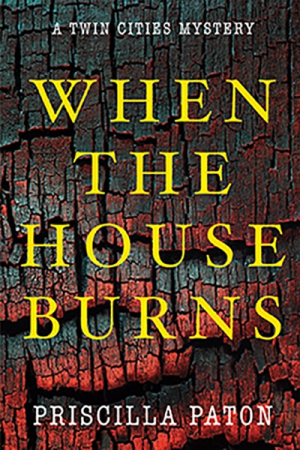When the House Burns
A Twin Cities Mystery
When the House Burns is a sharp mystery novel in which domestic betrayals and concealed misdeeds complicate a midwestern murder investigation.
In Priscilla Paton’s murder mystery When the House Burns, an insidious crime encircles a Minneapolis realtor.
When a woman’s body turns up outside of a house that’s for sale, Detectives Deb and Erik take the case. Deb is chaotic by nature, while Erik is deadpan and reticent; they have a quirky rapport and they rely on practical gumshoeing. A real estate agent, Karma, identifies the victim as her fellow agent, Jean, who is separated from her husband. The detectives meet with colorful midwestern residents, including a British employee at the real estate developer’s office, Rafe; Rafe’s boss; Jean’s coworkers; and Jean’s family. They learn about Jean’s reputation and about her alleged stalker. As they follow different leads at an unhurried pace, their deductions are shared.
Though the crime itself is detailed in stark, realistic terms, the book also features macabre humor. There are other deaths—one caused by witnessing spiders, and another involving climbing a roof. And Deb and Erik’s coworkers are witty and entertaining as they wrestle with the complications of their building having been condemned.
The background activity of this mystery novel is too busy, though. It includes considerations of social justice topics, including around diversity, trans people, and appropriated Native American land; these are awkward additions, often introduced without sufficient segues and not followed through on, and the conversations concerning such topics are abrupt. The book’s treatment of a homeless encampment, though, leads to potent considerations of what home represents to different people. But its shifts to incorporate elements of Karma’s personal life, including her experiences as a widow and a mother, are additional distractions, particularly when paired with its coverage of the detectives’ past relationships.
Better handled is the Twin Cities setting. There are careful descriptions of lakes, streets, and local sites that flesh out the depicted social problems well and that underscore the murder’s unsettling nature (the victim was an average woman going about her job in a quiet neighborhood). As the case progresses, questions surrounding the killer’s motive become more prominent, and Rafe’s bristling perspective adds to the suspense. However, because a few suspects are absent for lengthy intervals of the story, there’s minimal urgency when it comes to the detectives actually apprehending anyone. Near the novel’s end, there are twisting actions, ominous dangers, and an unexpected rescue.
A murderer operates with chilling dispassion in When the House Burns, a sharp mystery novel in which domestic betrayals and concealed misdeeds complicate a midwestern murder investigation.
Reviewed by
Karen Rigby
Disclosure: This article is not an endorsement, but a review. The publisher of this book provided free copies of the book and paid a small fee to have their book reviewed by a professional reviewer. Foreword Reviews and Clarion Reviews make no guarantee that the publisher will receive a positive review. Foreword Magazine, Inc. is disclosing this in accordance with the Federal Trade Commission’s 16 CFR, Part 255.

